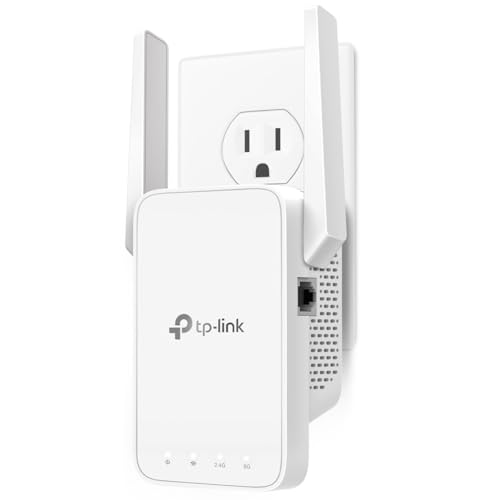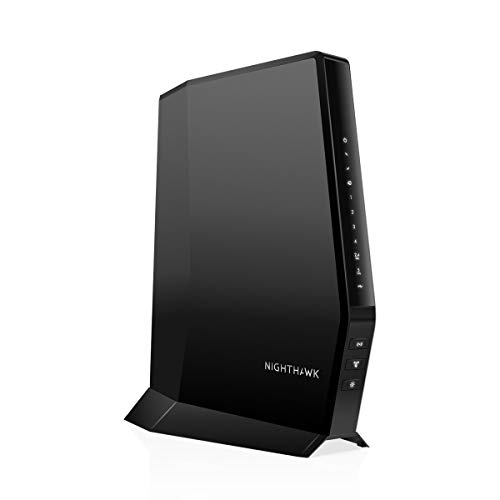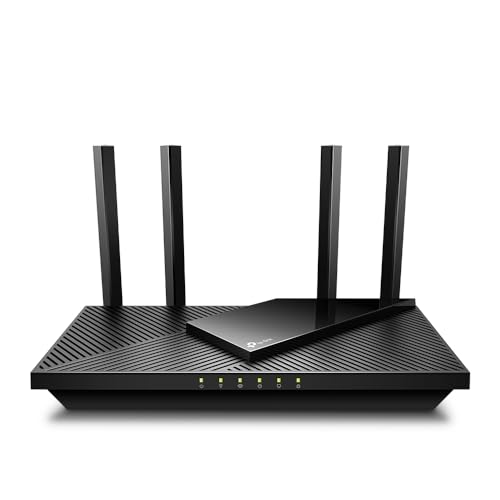Are you tired of Wi-Fi dead zones, buffering videos, or dropped calls in certain parts of your home? You’re not alone! A spotty internet connection can be incredibly frustrating, especially when you’re trying to stream your favorite show, hop on a video call for work, or just browse the web. Good news: you don’t need to break the bank to get a stronger, more reliable signal. We’ve scoured the market to find the best Wi-Fi extenders under 50 dollars that can give your home network the boost it desperately needs.
A Wi-Fi extender, also known as a Wi-Fi range extender or signal booster, grabs your existing Wi-Fi signal and rebroadcasts it, expanding your wireless coverage to areas where it was previously weak or non-existent. It’s a fantastic, budget-friendly solution to improve your internet coverage without upgrading your main router. Let’s dive into our top picks that offer great value and performance for under $50!
1. TP-Link AC1200 WiFi Extender (RE315)

The TP-Link AC1200 is a fantastic choice if you’re looking for a reliable and high-performing Wi-Fi extender that won’t drain your wallet. It’s even been recognized by Wirecutter, which speaks volumes about its quality and consistent performance. This dual-band extender ensures you get strong signals on both 2.4 GHz and 5 GHz frequencies, meaning faster speeds and more stable connections for all your devices. Its EasyMesh compatibility also means you can create a seamless, whole-home network with compatible routers, making your Wi-Fi experience smoother than ever.
Key Features:
– Dual-Band WiFi Extender with 1.2 Gbps Total Bandwidth (867 Mbps on 5 GHz, 300 Mbps on 2.4 GHz)
– Maximized Coverage up to 1600 Sq. Ft for up to 32 devices
– Cybersecurity Commitment (TP-Link is a CISA Secure-by-Design pledge signatory)
– Fast Ethernet Port for wired connections
– EasyMesh-Compatible for seamless whole-home mesh connectivity
– Smart Adaptive Roaming ensures connection to the strongest signal
– Access Point (AP) Mode to turn wired connections into Wi-Fi hotspots
– Easy Set Up in minutes using the TP-Link Tether app
– Universal Compatibility with almost all Wi-Fi-enabled devices and routers
Pros:
– Excellent performance for the price, often a “best value” pick.
– Dual-band capability handles multiple devices efficiently.
– EasyMesh compatibility is a huge plus for future-proofing your network.
– Simple setup process with the Tether app.
– Includes an Ethernet port for wired devices.
Cons:
– Won’t directly increase your internet speed, but improves coverage and reliability.
– Adaptive Roaming feature requires compatible devices/routers for full benefit.
User Impressions: Customers frequently praise the RE315 for its straightforward setup and noticeable improvement in Wi-Fi coverage, especially for tackling tricky dead zones. Many highlight its stable connection and the convenience of the Tether app.
2. TP-Link WiFi Extender with Ethernet Port (RE220)

Another solid contender from TP-Link, the RE220 is a compact and efficient Wi-Fi range extender perfect for smaller homes or specific areas needing a boost. It offers dual-band connectivity, giving you more bandwidth than older, single-band N300 extenders. This means less lag and more consistent performance when you’re browsing, streaming, or gaming. Plus, its fast Ethernet port is super handy for connecting a device like a smart TV or game console directly for a more stable wired connection. It’s a fantastic example of a reliable Wi-Fi extender under 50 dollars.
Key Features:
– Dual Band WiFi Extender: Up to 44% more bandwidth than single band N300
– Boosts Internet WiFi coverage up to 1200 square feet for up to 30 devices
– Eliminates Wi-Fi Dead Zones with lag-free connection
– Fast Ethernet port for wired devices
– Easy Set Up with 2 simple taps
– OneMesh Technology for seamless roaming when paired with compatible routers (e.g., Archer A7)
– Can function as a wireless access point or wireless adapter
Pros:
– Affordable dual-band performance.
– Compact design doesn’t block adjacent outlets.
– Simple and quick setup.
– Ethernet port adds versatility.
– Good for improving coverage in small to medium-sized areas.
Cons:
– OneMesh compatibility is more limited to specific TP-Link routers currently.
– Coverage area is slightly less than higher-end models.
User Impressions: Users love the RE220 for its ease of installation and how effectively it expands Wi-Fi signals into previously unreachable spots. It’s often recommended for its “set it and forget it” reliability.
3. 2025 Fastest WiFi Extender Signal Booster

If you’re looking for a simple, no-fuss solution to boost your Wi-Fi, this generic signal booster might catch your eye. While its “Fastest” claim should be taken with a grain of salt (it’s a 2.4GHz only extender), it’s designed to significantly expand your network’s reach and eliminate those pesky dead zones. It boasts an impressive coverage claim and prides itself on universal compatibility and an incredibly easy setup process, making it ideal for those who prefer plug-and-play simplicity.
Key Features:
– Stable & Fast 300Mbps WiFi Extender on the 2.4GHz band
– Wide Coverage, Eliminate Dead Zones: Expands network range up to 9999 Sq.ft
– Easy Setup & Universal Compatibility with one-button connection
– Compact Design for home or office use
– Secure & Energy-Efficient Connection with advanced security protocols
Pros:
– Extremely easy and quick setup.
– Very wide claimed coverage area for the price.
– Universal compatibility with all standard routers.
– Compact and discreet design.
Cons:
– Only operates on the 2.4GHz band, limiting top speeds for some devices.
– “Fastest” claim is misleading compared to dual-band options.
– Coverage claims can be optimistic; real-world results may vary.
User Impressions: Many users appreciate how simple it is to get this extender up and running. It’s a popular choice for basic internet extension for activities like web browsing and general smart device connectivity where high bandwidth isn’t critical.
4. TP-Link AC1900 WiFi Range Extender RE550

For those seeking robust performance even on a budget, the TP-Link AC1900 RE550 is a standout. This extender truly pushes the boundaries of what you can get from the best Wi-Fi extenders under 50 dollars, offering significantly higher bandwidth and broader coverage than most. With three adjustable external antennas and a Gigabit Ethernet port, it’s built for demanding tasks like 4K streaming and online gaming. Like other TP-Link models, it emphasizes cybersecurity and offers EasyMesh compatibility for a seamless network experience.
Key Features:
– Dual-Band WiFi Extender with 1.9 Gbps Total Bandwidth (1300 Mbps on 5 GHz, 600 Mbps on 2.4 GHz)
– Maximized Coverage up to 2100 Sq. Ft for up to 32 devices
– Cybersecurity Commitment (CISA Secure-by-Design pledge signatory)
– EasyMesh-Compatible for seamless whole-home mesh connectivity
– WiFi Extender with Gigabit Ethernet Port for ultra-fast wired connections
– Smart Adaptive Roaming for uninterrupted coverage
– Access Point (AP) Mode to create Wi-Fi hotspots
– Easy Set Up in minutes using the TP-Link Tether app
– Universal Compatibility with almost all Wi-Fi devices and routers
Pros:
– Impressive AC1900 speeds and coverage for its price point.
– Gigabit Ethernet port is excellent for high-bandwidth wired devices.
– Three external antennas provide superior signal strength.
– EasyMesh offers a smooth, unified network experience.
– Reliable performance for demanding applications.
Cons:
– May occasionally be slightly above the $50 mark depending on sales, but often falls within range.
– Larger physical footprint compared to more compact extenders.
User Impressions: Reviewers are consistently impressed by the RE550’s powerful signal and how well it handles multiple devices simultaneously. The Gigabit Ethernet port is a frequently praised feature for its utility in gaming setups or home offices.
5. nonser WiFi Extender, 2024 Fastest WiFi Booster 1200Mbps

Rounding out our list of the best Wi-Fi extenders under 50 dollars is the nonser WiFi Extender. This device promises extensive coverage and blazing-fast speeds thanks to its dual-band capabilities and four antennas. It’s a versatile pick, offering three different work modes – repeater, AP mode, and an Ethernet port – to suit various networking needs. With claims of up to 10,000 sq.ft of coverage, it aims to eliminate dead zones even in large spaces, ensuring robust connectivity throughout your home or office.
Key Features:
– Coverage to 10000sq.ft with 4 antennas
– Blazing Fast Speeds: 1200Mbps high-speed transmission (Dual-band 2.4G and 5.0G)
– Three Work Modes: WiFi repeater, AP mode, and Ethernet port
– US Security Protocol (WPA/WPA2) for network protection
– Wide Compatibility and Simple Setup
Pros:
– Very wide claimed coverage area.
– Dual-band 1200Mbps speeds for smooth performance.
– Versatile with three different operational modes.
– Simple setup process.
– Multiple antennas for potentially better signal reception.
Cons:
– Coverage claims might be overly optimistic in real-world scenarios.
– Brand may be less established than TP-Link, so long-term support might vary.
– Specific performance details (e.g., individual band speeds) aren’t broken down as clearly as some others.
User Impressions: Customers often highlight its ease of use and its ability to cover large areas. Many found it effective for extending Wi-Fi to tricky spots like basements or outdoor areas, appreciating its straightforward setup.
Frequently Asked Questions (FAQ)
Q1: What exactly does a Wi-Fi extender do?
A1: A Wi-Fi extender (or range extender/signal booster) takes your existing Wi-Fi signal from your router and rebroadcasts it. This expands the reach of your wireless network, helping to eliminate “dead zones” and provide a stronger, more reliable internet connection in areas where your router’s signal is weak.
Q2: Will a Wi-Fi extender increase my internet speed?
A2: Not directly. A Wi-Fi extender improves Wi-Fi coverage and signal strength, which can feel like an increase in speed because you’re getting a more stable connection and less buffering. However, it won’t increase the maximum internet speed provided by your internet service provider (ISP).
Q3: How do I choose the best Wi-Fi extender for my needs?
A3: Consider your home’s size and layout (coverage area), how many devices you have (dual-band is better for more devices), whether you need an Ethernet port for wired connections, and ease of setup. If you have many modern devices or stream 4K content, a dual-band AC1200 or higher extender is generally better.
Q4: Where should I place my Wi-Fi extender for optimal performance?
A4: The best spot is usually about halfway between your main router and the Wi-Fi dead zone. You want the extender to receive a strong signal from your router, so don’t place it in a dead zone itself. Many extenders have indicator lights to help you find the ideal location.
Q5: What’s the difference between dual-band and single-band extenders?
A5: Single-band extenders typically only operate on the 2.4 GHz frequency, which offers wider coverage but slower speeds. Dual-band extenders use both 2.4 GHz and 5 GHz frequencies. The 5 GHz band is faster but has a shorter range. Dual-band gives you more flexibility and better performance for multiple devices and high-bandwidth activities.
Q6: Can I use a Wi-Fi extender with any router?
A6: Most Wi-Fi extenders are universally compatible with standard routers and gateways. However, for features like “OneMesh” or “EasyMesh,” you might need specific compatible routers from the same brand to get the full seamless roaming experience.
Q7: Is it easy to set up these budget-friendly Wi-Fi extenders?
A7: Yes, generally! Most modern Wi-Fi extenders, especially those under $50, are designed for quick and easy setup. Many use a simple WPS button press or a dedicated mobile app that guides you through the process in just a few minutes.




Leave a Reply
You must be logged in to post a comment.